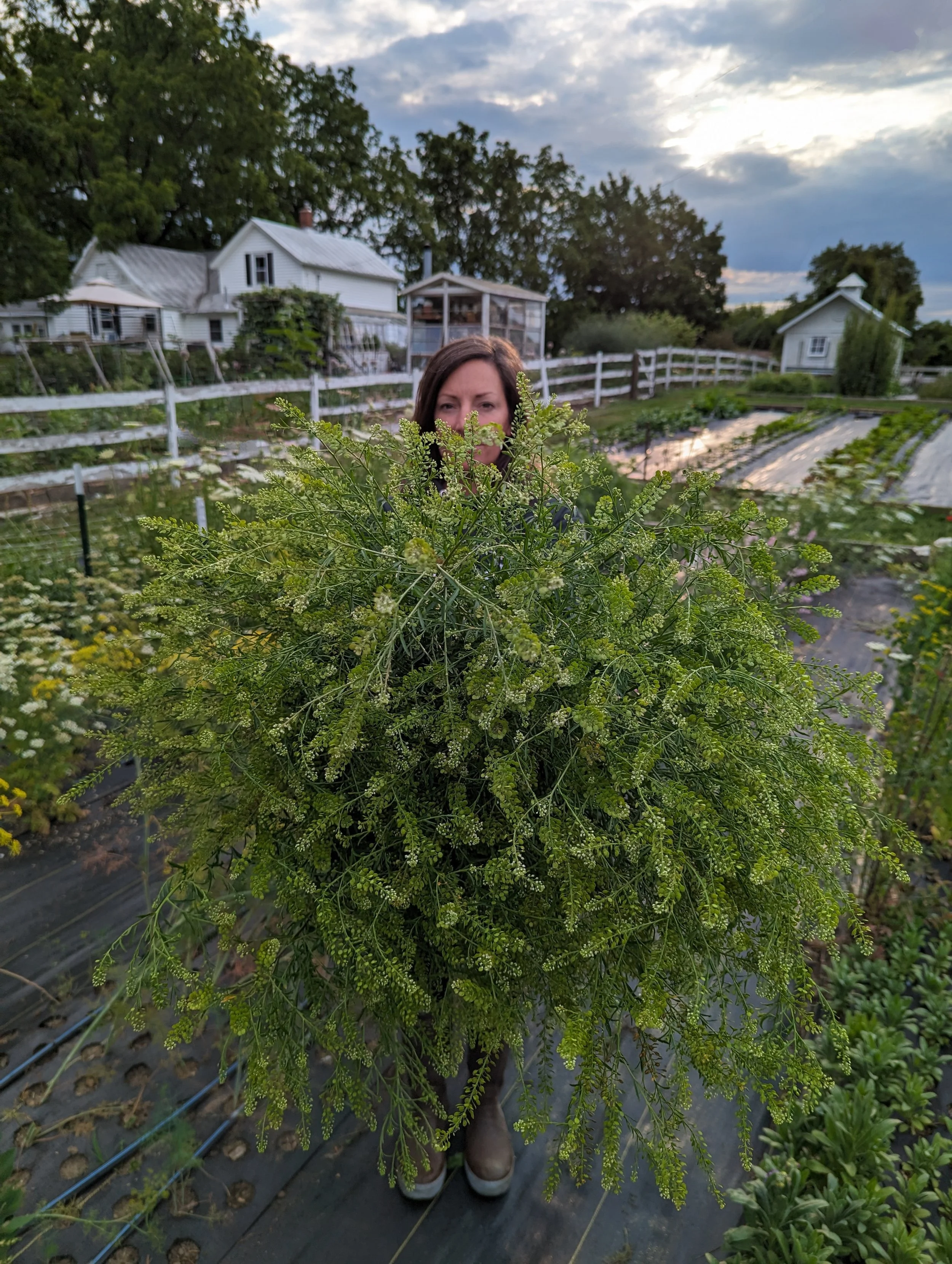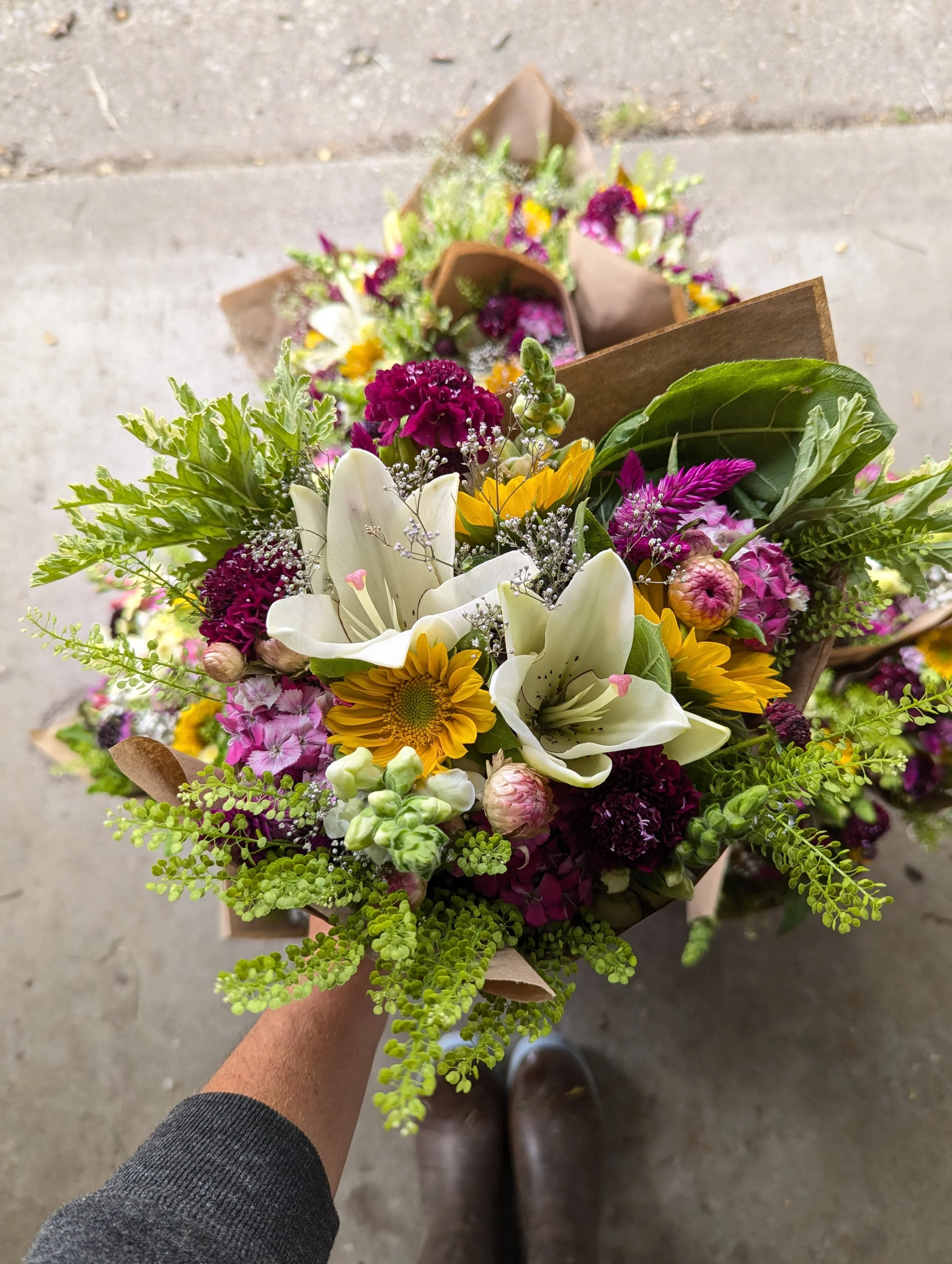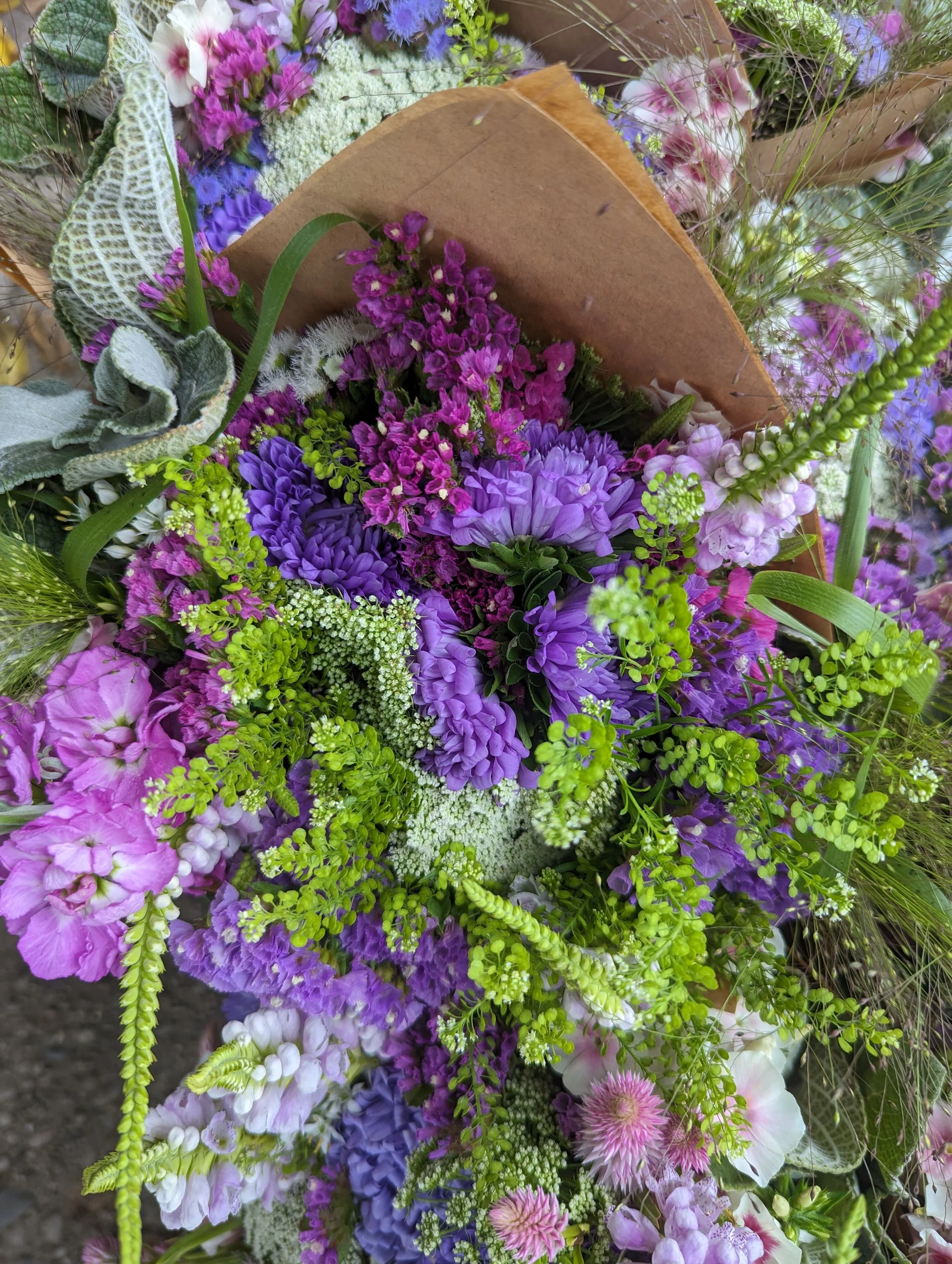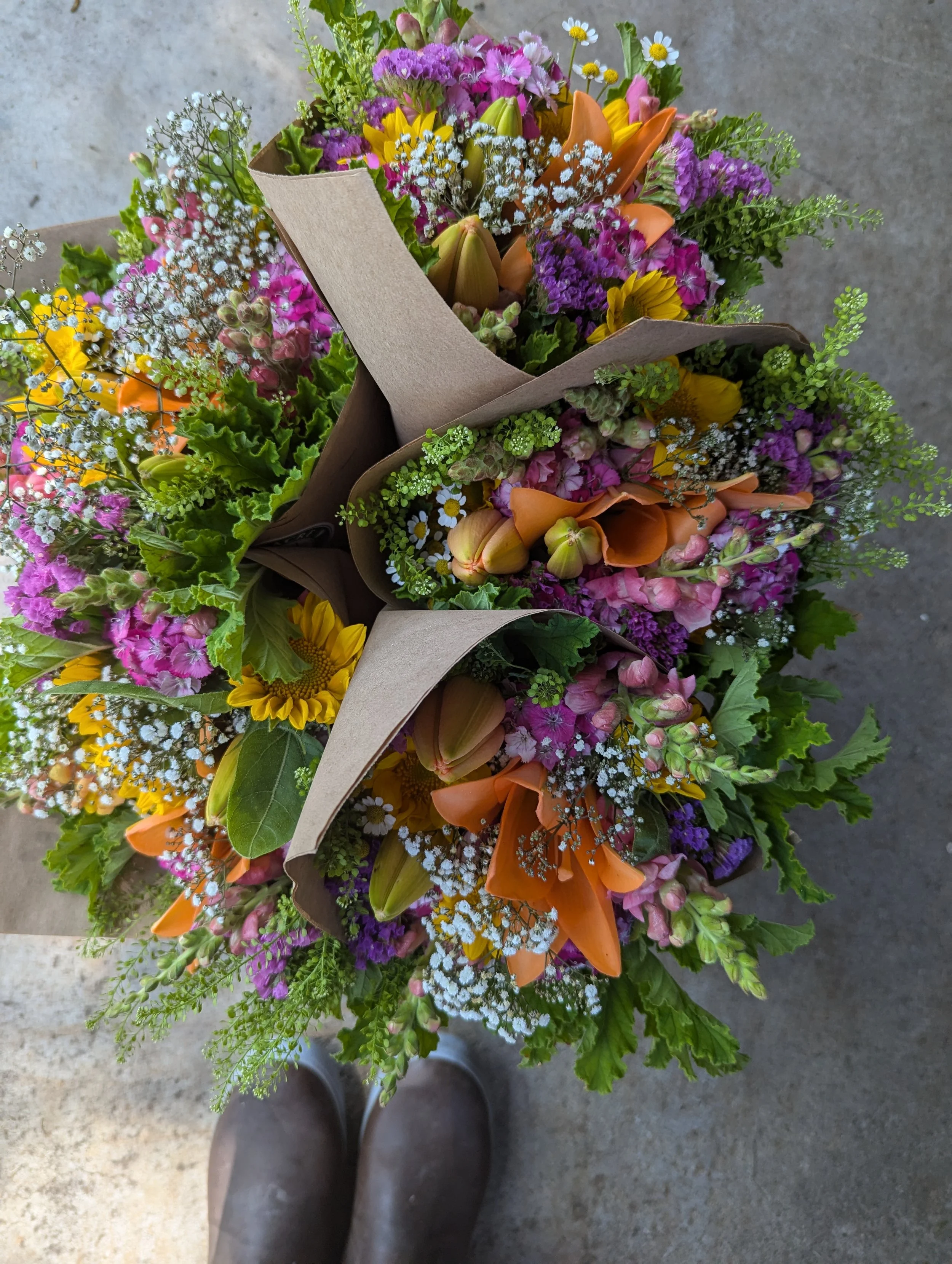Best Perennials for the Cut Flower Garden
Perennials are a great choice to fill the awkward space between Spring Blooming bulbs and Summer Blooming Annuals!
When we started our flower farm, we grew mostly Summer Blooming Annual flowers like Cosmos, Sunflowers and Zinnias. The seed is inexpensive and they grow quickly when planted from seed after the Average Last Spring Frost Date.
However, we soon noticed that we struggled with what I call “Awkward Gap Season”, which is the 6-8 weeks between when the Spring blooming bulbs die off (Daffodils, Tulips, etc) in mid May and the Summer Blooming Annuals begin in mid July.
What could we use to fill that “dead” space between mid-May to mid-July?
Perennials to the rescue!
Many types of Perennials bloom during the dreaded “Awkward Gap Season”.
I can’t tell you how much I’ve learned to love and appreciate our Perennials. Even though many Perennials are only in flower for about 2-6 weeks out of the year, many of them bloom right when I need them, when nothing else on the farm is in bloom!
Perennials do take a few years to establish before they are vigorous enough to harvest from, so I recommend planting as many as you can, as soon as you can.
While they may not bloom for a long length of time (many Perennials bloom for about 2-6 weeks out of the year), they are hardy, reliable and generally more drought tolerant than annual plants.
Some Perennials will give you a flush of blooms in early summer, then a second flush in late summer/early fall if cut back after the first blooming.
Fall is the BEST time to plant Perennials (about 4-6 weeks before your Average First Fall Frost), but they can also be planted in the spring.
Here is a list of a Few of my favorite Perennials on our farm
Not all of these Perennials bloom in the spring/early summer… but many do!
* Please note that some crops we grow may be considered “invasive” in your area. Be sure to do your own research before planting!
Achillea millefolium - Yarrow “Colorado Mix”
Allium - Ornamental Onion “Millenium”, “Purple Sensation”, “Drumstick”, “Garlic Chives”
Anemone x hybrida - Japanese Anemone “Honorine Jobert”
Aruncus dioicus - Goatsbeard
Astilbe -False Goatsbeard
Baptisia hybrid - False Indigo “Decadence® Deluxe Pink Truffles”
Echinops bannaticus - Globe Thistle “Blue Glow”
Eryngium planum - Sea Holly “Blue Glitter”
Geum - Avens “Totally Tangerine”, “Tempo Rose”, “Pretticoats Peach”
Gypsophila - Baby's Breath “Million Star II”
Hylotelephium telephium 'Herbstfreude' - Stonecrop/Sedum “Autumn Joy”
Lilium Lily (prefer the LxA hybrid types, as they are unscented)
Lupinus - Lupine
Lysimachia clethroides - Gooseneck Loosestrife
Melissa officinalis - Lemon Balm
Nepeta mussinii - Catmint
Origanum vulgare - Wild Marjoram
Paeonia lactiflora - Peony “Sarah Berhardt”, “Kansas”, “Dr. Alexander Fleming”, Duchess de Nemours”, “Festiva Maxima”, etc
Perovskia atriplicifolia - Russian Sage
Phlox paniculata - Garden Phlox “David”
Physostegia virginiana - Obedient Plant
Pycnanthemum pilosum - Mountain Mint
Rudbeckia hirta - Black-Eyed Susan “Irish Spring”, “Moroccan Sun”
Rudbeckia Triloba - Brown-Eyed Susan “Filou”
Scabiosa caucasia - Pincushion Flower “Fama Blue”, “Fama White”
Solidago - Goldenrod
Tanacetum parthenium - Feverfew/Matricaria “Magic Single”, “Magic Lime Green”, “Tetra White”
Veronica - Speedwell “Skyler Blue”, “Skyler Pink”, “Skyler White”
Feverfew “Magic Single”
Sedum “Autumn Joy”
Peony “Dr. Alexander Fleming” (pink), “Kansas” (magenta), “Duchess de Nemours” (white)
Rudbeckia triloba
Yarrow
Japanese Anemone “Honorine Jobert”
Lupine
Goatsbeard
Globe Thistle “Blue Glow”
Veronica “Skyler Blue”, “Skyler Pink”, “Skyler White”
Gypsophila
Rudbeckia hirta “Moroccan Sun”
Baptisa hybrid “Decadence® Deluxe Pink Truffles”
How to Grow: Globe Amaranth
How to Grow: Globe Amaranth (Gomphrena)
Pronunciation: glowb am-ah-ranth or gaam-free-nuh
INTRODUCTION
Cute. Adorable. Sweet.
Gomphrena (or Globe Amaranth - I use the two names interchangeably) is not the flashiest flower in the cutting garden, but they are useful, versatile and playful. Every garden should have some!
They can be tucked into bouquets or even better, displayed on their own in bunches.
But here’s the best part - Gomphrena is a wonderful “Everlasting” (dried) flower that retains its color and form for years. During the long winter months, I have dried Gomphrena bunches scattered around, bringing brightness and beauty to our home.
Gomphrena is a heat-loving flower and thrives in hot climates.
Brilliant Mix
Let’s look at the Pros and Cons of growing Globe Amaranth for cut flower use.
PROS
They come in a variety of colors (mostly pinks, reds, violets and white)
They are a playful addition to bouquets.
They are very heat tolerant.
They have a good vase life of about 7 days.
They are an excellent “Everlasting” flower.
They are great for floral “wearables”, such as flower crowns, corsages, boutonnieres, etc.
Audray Pastel Mix
CONS
They can be somewhat tricky to harvest.
They need heat to thrive.
Audray White
CHOOSING SEEDS
There are 2 main types of Gomphrena, so pay attention while choosing seed.
Gomphrena globosa has a more branching type of growth habit. I find the stems a bit knobby and cumbersome to harvest at times, although they DO fill out a bouquet quickly. It comes in a variety of beautiful violets, pinks, and whites. The plants have broad, thick leaves. Harvestable stems have multiple blooms per stem.
Gomphrena haageana has more upright stems and harvesting is a breeze. The plants have narrow leaves that are easy to strip off. It comes in shades of red and orange, much bolder than the Gomphrena globosa colors. Harvestable stems have only one bloom per stem, so while they are easier to harvest, they are time-consuming.
Oh, how I wish these came in pastel shades too! I would probably grow only the Gomphrena haageana type if they came in more colors!
Here are a few of my favorite Gomphrena to grow for cut flower use:
“Bicolor Rose“ (globosa type)
“QIS Orange” (haageana type)
“Strawberry Fields” (haageana type)
Salmon Pastel
HOW TO SOW
Gomphrena is a late summer blooming flower and loves heat. They should be planted after the last spring frost (for us, it’s about May 15).
Transplants or Direct Sow?
Transplants are recommended, as germination can be erratic (and seedlings look like weeds!).
Transplants should be started indoors 6-8 weeks before the last spring frost. They like heat, so place the trays on a heat mat to germinate. After germination, keep the seedlings growing in a warm place.
QIS Carmine
PLANT SPACING
Spacing varies depending on what type you’re growing.
Globosa types are best at 9-12 inch spacing.
Haageana types can grow at 6-9 inch spacing.
Salmon Pastel
Audray White
By the time the plants are large enough to bloom, they are quite self-reliant. Deep watering once a week should be sufficient (water until soil is saturated as far down as you can stick your finger in the soil).
If flowers are harvested and spent blooms are “deadheaded” (removed), the plants will continue to send up blooms until frost or cold weather arrives.
We do not use netting or support with Gomphrena, since it would make harvesting difficult. If the plants are planted close enough together, they will support each other.
Audray White
STAGE OF HARVEST
Harvest when the blooms are in full color, but not “tired” and faded. Gomphrena has a long “harvest window”, which means you will have a couple of weeks where they are at the ideal stage before they start to fade (unlike some flowers that have a harvest window of just mere hours!).
Harvest deep into the plant, down to 1-2 sets of leaves from the bottom, to stimulate more growth. If you’re growing lots of them or it’s the end of your growing season, it might be easier to harvest the entire plant at once, as harvesting individual stems can be time-consuming.
We have started using this “whole plant harvest” method on our farm, instead of treating the plants as “cut-and-come again”. We succession plant Gomphrena 3-4 times over the season about 2-3 weeks apart, so we always have some plants ready to be harvested.
Salmon Pastel
POST-HARVEST CARE
As always, harvest flowers in the cool of the day (morning or evening).
Gomphrena requires no special care if being used fresh.
For dried flowers, hang small bunches upside down in a warm, dry, well-ventilated location out of the direct sun (a garage, closet or even kitchen pantry could work). Once dry, flowers hold indefinitely.
Dried Gomphrena - QIS Carmine, QIS Orange
QUESTIONS?
Ask them here and I’ll get back to you!
Ready for more?
If you’re serious about growing the garden of your dreams this year, register for my online course, “Backyard Cutting Garden 101”. You’ll find everything you need to plan, grow, harvest, and arrange your stunning blooms. I can’t WAIT to help you grow! Click on the button below for all the details.
“Everlasting Flowers”: How to Dry Flowers
How to dry flowers… so you can enjoy them year round!
Ahhhh, summer.... some days I wish I could hold onto you forever. But alas, I've discovered it's your fleeting nature that makes you oh so sweet.
I must confess. I adore winter and look forward to that time of quiet restoration after the insanity of summer.
But I miss my flowers.
Imagine my delight when I discovered that some of the flowers we grow are considered "Everlasting" flowers.
"Everlasting" flowers are a category of cut flowers that are easy to dry and will last for years with proper handling.
Drying flowers is a fun project to do with kids... and a great way to create a year round reminder of summer fun.
Last fall, I dried bunches and bunches of flowers, then used them to decorate my home during the long winter months.
“Everlasting Bouquets” of flowers for drying: Celosia, Eucalyptus, Globe Amaranth, Green Drops Grass, Statice, Strawflower
How to Dry Flowers
It's a simple, easy process!
1. Cut flowers in the morning, after the dew has dried but before the day is too hot (usually before 11am).
*Each flower has it's own unique "ideal stage of harvest", which can make things tricky... but as a general rule, cut the flowers early while they are still opening up, not completely in bloom. You may have to do some experimenting to determine the "ideal stage of harvest".
2. Strip the foliage off the stem. (Note: Strawflower stems are notoriously fragile. It's recommended that the flower heads are gently popped off the stem and replaced with a piece of floral wire instead).
3. Create bundles of about 10-12 stems and secure the stem ends with a rubber band or string.
4. Hang the bundles upside down (flowers facing the floor) in a dry, dark place, out of direct sunlight (sun makes the colors fade). An attic or closet would be good. A basement probably too damp. I've had good luck drying in our garage and kitchen pantry.
5. In 2-3 weeks, the flowers should be fully dry and ready to use in Everlasting arrangements.
Statice “QIS Apricot”
Alternative Method for Drying Flowers
This method works best for: Bells of Ireland, Celosia, Hydrangea and Yarrow
1. Place flowers with stems in a jar filled halfway with water.
2. Place jar in a warm, dry, dark place (a kitchen pantry or attic would be ideal).
3. Allow water to evaporate naturally. Once water is completely gone, the flowers should be dry and ready to use.
Strawflower “Bright Rose”
Flowers Suitable for Drying
Almost every flowers CAN be dried... but not all of them will actually look nice. Ha!
When in doubt, you can always try it out... but as a general rule, look for flowers/foliage that feel "papery" or stiff.
Here are a few that are good candidates for drying. Of course, this is by no means an exhaustive list!
Amaranth
Artemisia
Baby's Breath
Bells of Ireland
Celosia
Craspedia (Drumstick Flower, Billy Buttons)
Dusty Miller
Eryngium (Sea Holly)
Grasses - Pods/Seed heads
Gomphrena (Globe Amaranth)
Hydrangea
Lavender
Money Plant (Lunaria)
Nigella (Love in a Mist) - Pods
Poppy - Pods
Queen Anne's Lace (Ammi or Daucus)
Starflower (Scabiosa) - Pods
Statice
Strawflower
Wheat
Yarrow
Globe Amaranth “Audray White”
Right now is a GREAT time to start drying flowers for your fall and winter decorating.
Please be sure to comment or share with me if you try this fun project. Enjoy these last few weeks of summer :)
-Lori
READY FOR MORE?
If you’re serious about growing the garden of your dreams this year, and want me to answer all your burning questions, register for my online course, “Backyard Cutting Garden 101”.
You’ll find everything you need to plan, grow, harvest and arrange your stunning blooms. I can’t WAIT to help you grow! Click on the button below for all the details.
Tears in the Garden
A Good Friday meditation about the garden.
Tears in the Garden
*I wrote this essay in 2013. Praying and planting seeds has become part of my Good Friday ritual since that time. I highly recommend getting out in your garden if possible. God has so many powerful revelations to teach us through His creation.
Here in Michigan, when I plant peas on Good Friday, they ripen right around the Summer Solstice, the first day of Summer. Remembering the sorrow of the planting day makes the sweetness of the peas on a summer day that much more precious.
Easter Sunday is coming, friends.
But first, we have to live through Good Friday.
The older I become, the more emotional I am on Good Friday. The older I become, the more overwhelmed I am by ultimate sacrifice of Jesus. The older I become, the more significance I find in simple things. Like gardening.
Today, I went out to the garden to plant the first seeds of the season and talk to God (we have our best conversations in the garden). After a bitter, cold spring, the ground finally thawed enough for me to plant peas. It seemed fitting to me that today would be a good day to plant, a good day to bury seeds that appeared to be dead and dormant, but would soon burst forth with new life.
The garden beds were ready and waiting, prepared last fall. After a bit of raking to smooth the soil, I dug shallow furrows and painstakingly began to place the seeds.
And that's when I suddenly found myself with tears streaming down my face, drenching the soil near my hands. Overwhelmed with grief and sorrow.
Each seed I placed in the soil represented my sins. Too many to count. I gave those sins names as I placed them in the furrow. Pride. Judgement. Hatred. Complacency. Lies. Gossip. Conceit. Bitterness. Unjustified anger. Covetous Thoughts. Vanity. Contempt. Selfishness. Lack of concern for my neighbor.
The list went on and on. I felt broken, dirty, ruined. Despicable.
After all the seeds were place, I began to bury them. With each swipe of my hand, the seeds were covered by the soil, no longer visible... just as Jesus came to earth and sacrificed Himself on the cross so He could cover up all my sins.
My sins. Not just the sins on the whole world. He did it for me. He would have suffered in the same way, even if I was the only human on earth. And He would have done the same thing for you.
This ugly, wrinkled, insignificant, dead-looking seed will grow. It will thrive and grow strong, beyond my wildest dreams. It will produce food that will nourish and bring health to my family.
And it's just the same with my life. Jesus takes my sin, my ugliness, my weakness when I confess those things and hand them over to Him. He covers them up.
He transforms me into someone who is whole and has purpose. Someone who brings hope and healing to the world. He does the same for you, friend. Only He can take something so wretched looking and make it beautiful.
As I knelt in the garden, naming and confessing my sins, Jesus covered up all my sins and I left the garden with a clean heart, a clean mind, a clean soul.... ready to grow and thrive for Him, so that I can nourish and feed the souls and bodies of His children.
I discovered transformation in the garden is not just for plants, but people as well.
Today I shared tears in the garden with my Savior. Tear of grief, tears of regret, tears of shame. Tears that He had to suffer for me. Tears that He had to weep in a garden too...
Sunday is coming. Today is a day to mourn, friends, but in two days my heart will be bursting forth with joy and praise. I hope you'll join me.
How to Grow Peppergrass
How to Grow Peppergrass
How to Grow: Peppergrass (Lepidium ruderale)
INTRODUCTION
Of all the plants we grow on the farm, Peppergrass might be my absolute favorite.
Just a few stems in a bouquet add sparkle, texture and delight.
The emerald-colored “beads” (seed pods) work in a wide variety of arrangements, from fun and playful to elegant and sophisticated.
Peppergrass is the common name for this lovely plant in the Cress (Lepidium) family.
Several similar-looking plants are useful for floral design, including:
Persian Cress (Lepidium sativum),
Pennycress (Thlaspi arvense) and
Peppergrass (Lepidium rulerale).
I find Peppergrass to be the most versatile of these three plants.
Peppergrass is useful at 3 different stages:
Fresh, bright green
Fresh, ripened to rose gold
Dried
Peppergrass performs best as a Hardy Annual, planted in the cool weather of spring. We’ve experimented with succession planting it every 2-3 weeks to have a continuous supply, but it does not grow well in the heat of summer (plants grow short and stunted).
This year, we experimented with direct sowing seeds in July for a fall harvest (October). It was somewhat successful, but we need to do more trials before I can recommend it.
Peppergrass, ripening to rose gold
Let’s look at the Pros and Cons of growing Peppergrass for cut flower use.
PROS
It’s one of the best textural filler/foliage you can grow. We use every stem we can grow.
The plants have a long harvest window, which means you have a 7-14 day opportunity to harvest them (unlike some flowers that have a harvest window of a few hours!).
They are tough and durable.
They are long-lasting in the vase.
They have a sturdy stem with a branching habit. One stem can have up to 12-15 branches.
Did I mention that texture?!? They make your bouquets absolutely sparkle!
CONS
They are a “one and done” crop. Once the stem has been harvested, it’s done.
They don’t grow well in hot summer weather. Oh, how I wish I could get Peppergrass to grow all season long!
They can be a bit tedious to harvest. I recommend removing as many of the leaves as possible, as they expire quickly. The stems and “beads” will stay good for weeks.
HOW TO SOW
Some types of plants respond best to the S.T.U.N. growing technique. Peppergrass, along with many Hardy Annual plants, is one of them.
S.T.U.N. is a method I read about in the book “Restoration Agriculture” by Mark Shepherd.
It stands for:
S - Sheer
T - Total
U - Utter
N - Neglect
Ha! Isn’t that the BEST growing technique you’ve ever heard of?
Yup. Some plants THRIVE on neglect. The harder you TRY to grow them, the more they die. These plants do not like to be fussed over.
So here is how I grow Peppergrass.
I fill a seed tray with moist seed starting mix. I casually drop 1-2 seeds per cell, then casually sprinkle a bit of vermiculite on top. It’s important to do this casually - if you’re too careful, the plants will sense it and not grow. Ok, I’m kind of joking… but kind of not ;)
Give the seed trays a quick sprinkle of water to help activate the germination process and then (this is important!), tuck the seed tray in a cool dark place for a week and COMPLETELY IGNORE IT.
No heat mat, no grow lights, no fussing. Just leave it alone.
Set a note on your phone or calendar to check on the tray in about a week.
If they haven’t germinated yet, sprinkle again and check back in a few days.
Once they have germinated, you can remove the trays from the cool dark place and put them in a bright location. Grow the seedlings for about 4-6 weeks before hardening them off and transplanting.
Peppergrass in bouquets
Transplants or Direct Sow?
Peppergrass can be transplanted or directly sown. I recommend transplants since the Peppergrass seedlings resemble weeds and it may be difficult to distinguish them from weed seedlings.
Peppergrass seedlings
As mentioned earlier, we’ve experimented with succession planting Peppergrass 2-3 times in the spring, as well as direct sowing in mid-summer for a fall harvest. The earliest sown succession always performs best. Subsequent successions are shorter and stunted.
Depending on where you live, you may have the best success sowing the seeds in the fall, 4-6 weeks before your Average First Fall Frost Date. The plants are tough and will “overwinter” in the garden, then bloom the following spring. This option may be best for people growing in hot climates.
P.S. If you have a hoophouse or caterpillar tunnel, you can plant Peppergrass in the fall and overwinter it for an early spring harvest. Don’t forget to also plant seeds in early spring too. This will give you a second succession after the hoophouse crop is finished.
PLANT SPACING
3-6 inch spacing is best. This will encourage the plants to grow taller, longer, straighter stems.
GROWING ON
Peppergrass has average fertility and water needs. Avoid overhead watering as it can cause mildew on the leaves.
Plants naturally branch and do not need to be pinched.
Netting or support is recommended but not completely necessary.
STAGE OF HARVEST
Harvest when the small white flowers have completely shed. Peppergrass is grown for its seed pods, not its flowers. You can harvest the stems when they are bright green or you can wait for them to fade to rose gold.
Harvest the entire stem at the base of the plant. You can use the entire stem in a bouquet or break the branches off from the main stem.
POST-HARVEST CARE
Remove as many leaves from the stem as possible. The leaves expire and rot quickly, but the stems and beads will last for weeks.
Peppergrass is a wonderful dried flower as well. Simply hang bunches upside down in a warm dry place for about 3 weeks until brown and dry.
Peppergrass hanging to dry in our barn
Dried Peppergrass lasts for years
QUESTIONS?
Ask them here and I’ll get back to you!
Ready for more?
If you’re serious about growing the garden of your dreams this year, register for my online course, “Backyard Cutting Garden 101”. You’ll find everything you need to plan, grow, harvest and arrange your stunning blooms. I can’t WAIT to help you grow! Click on the button below for all the details.
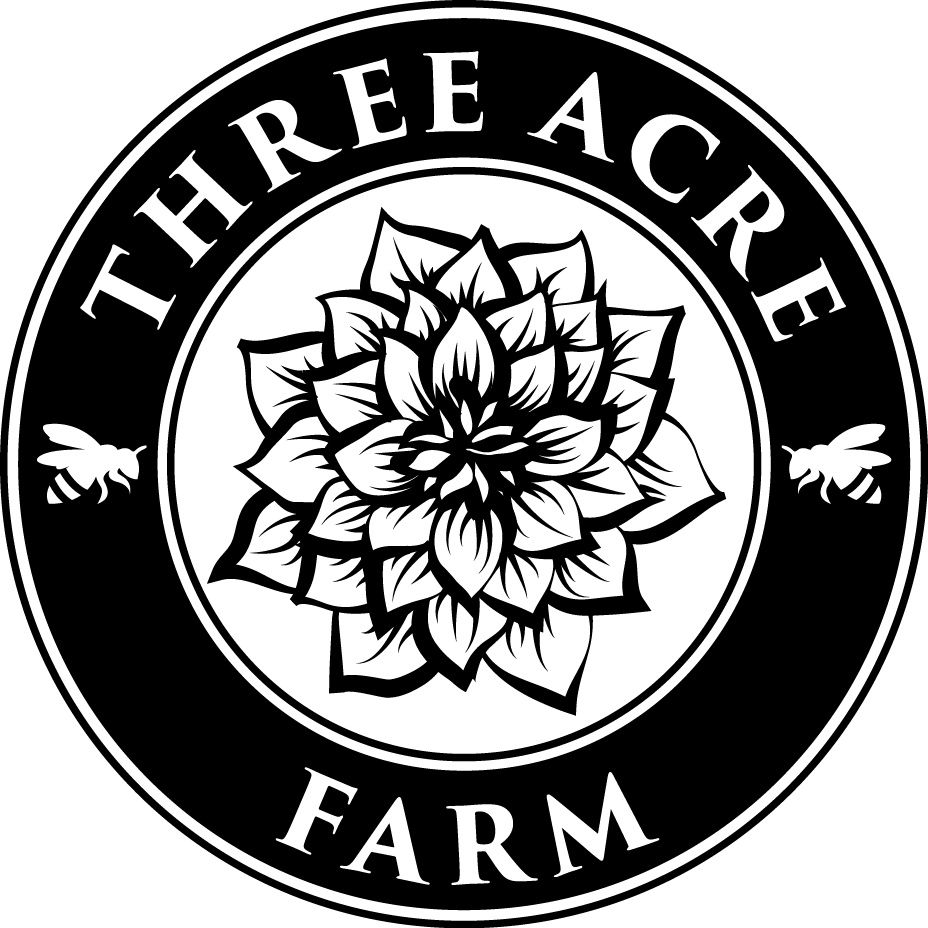

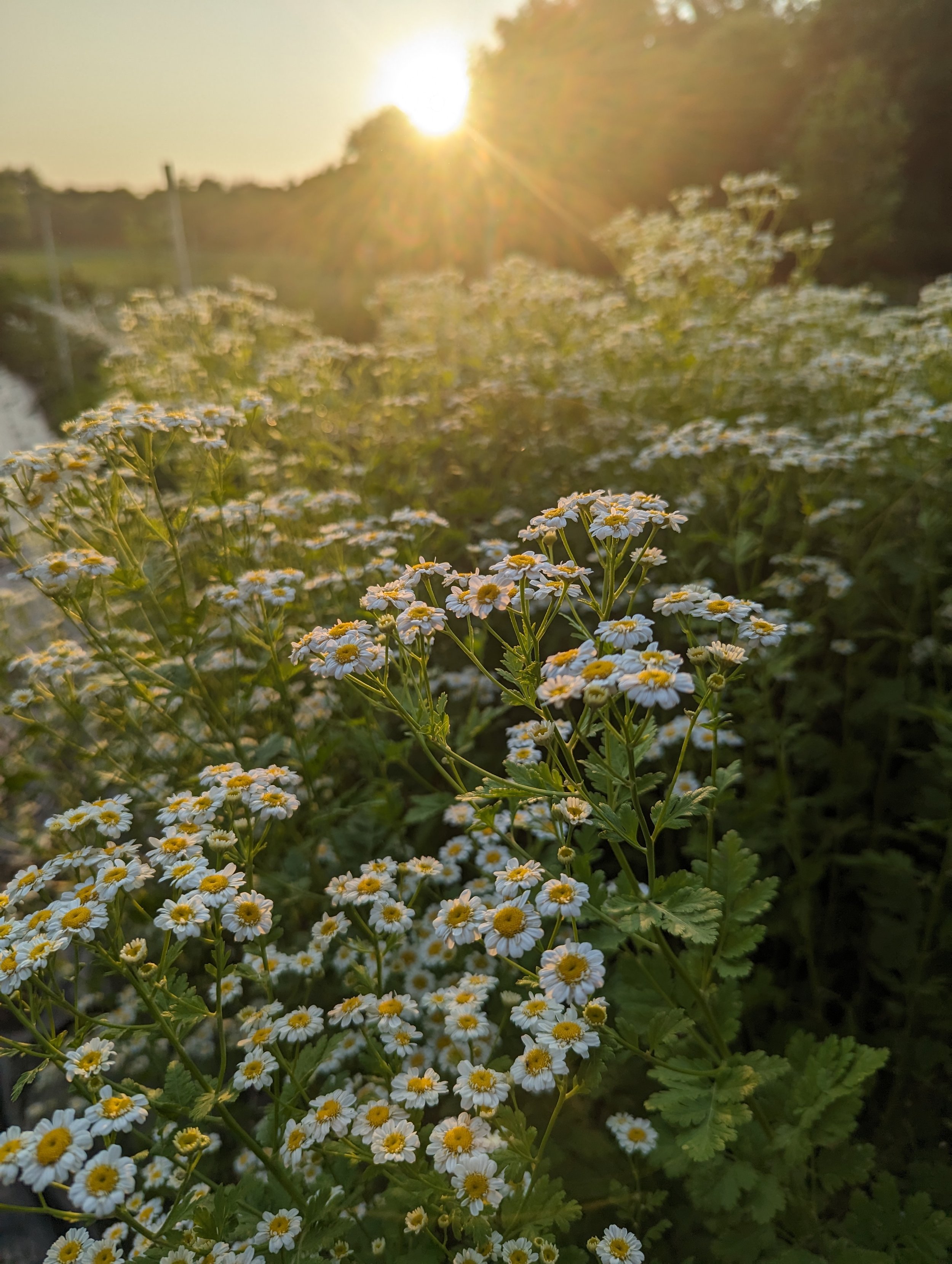




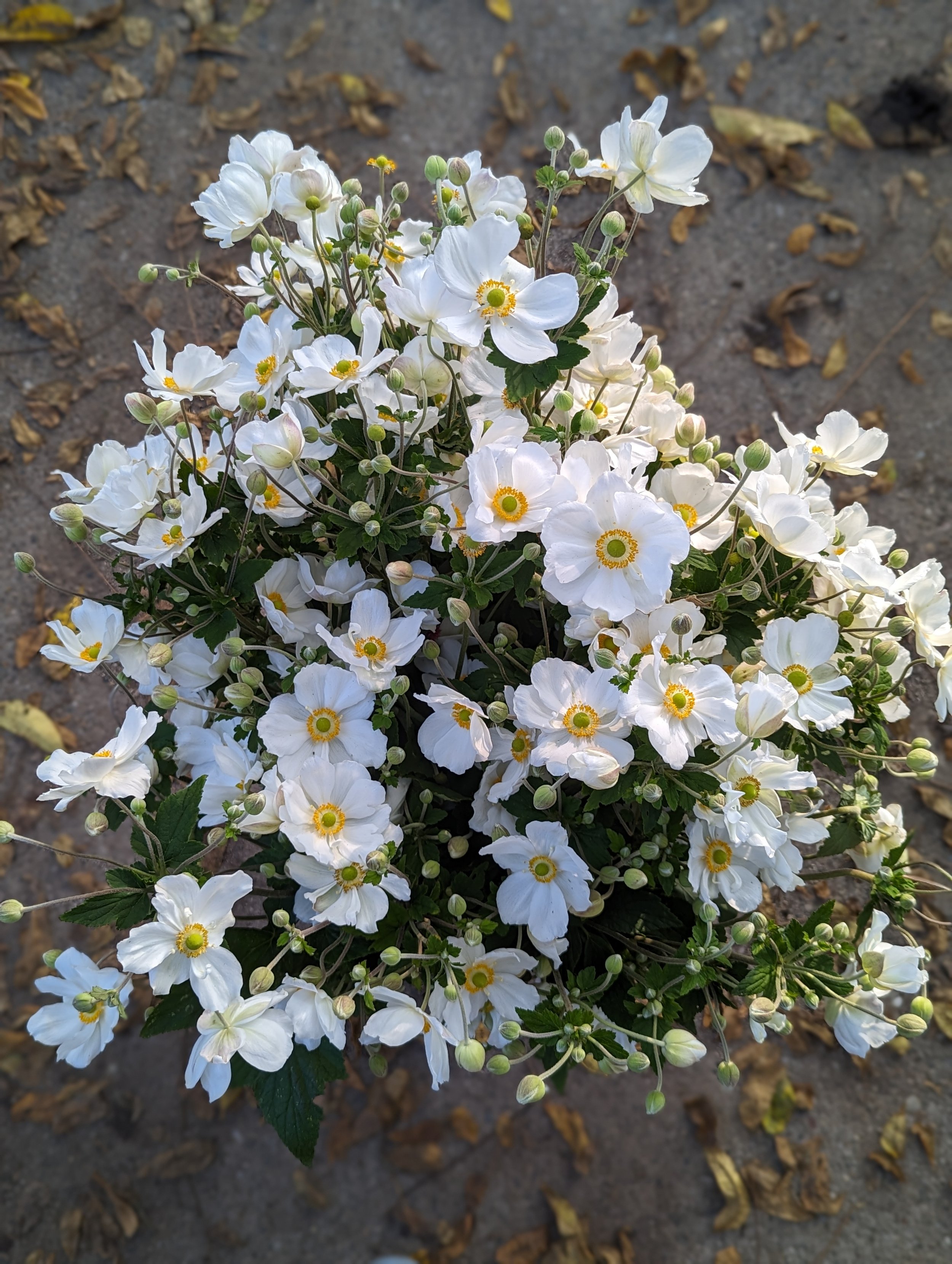




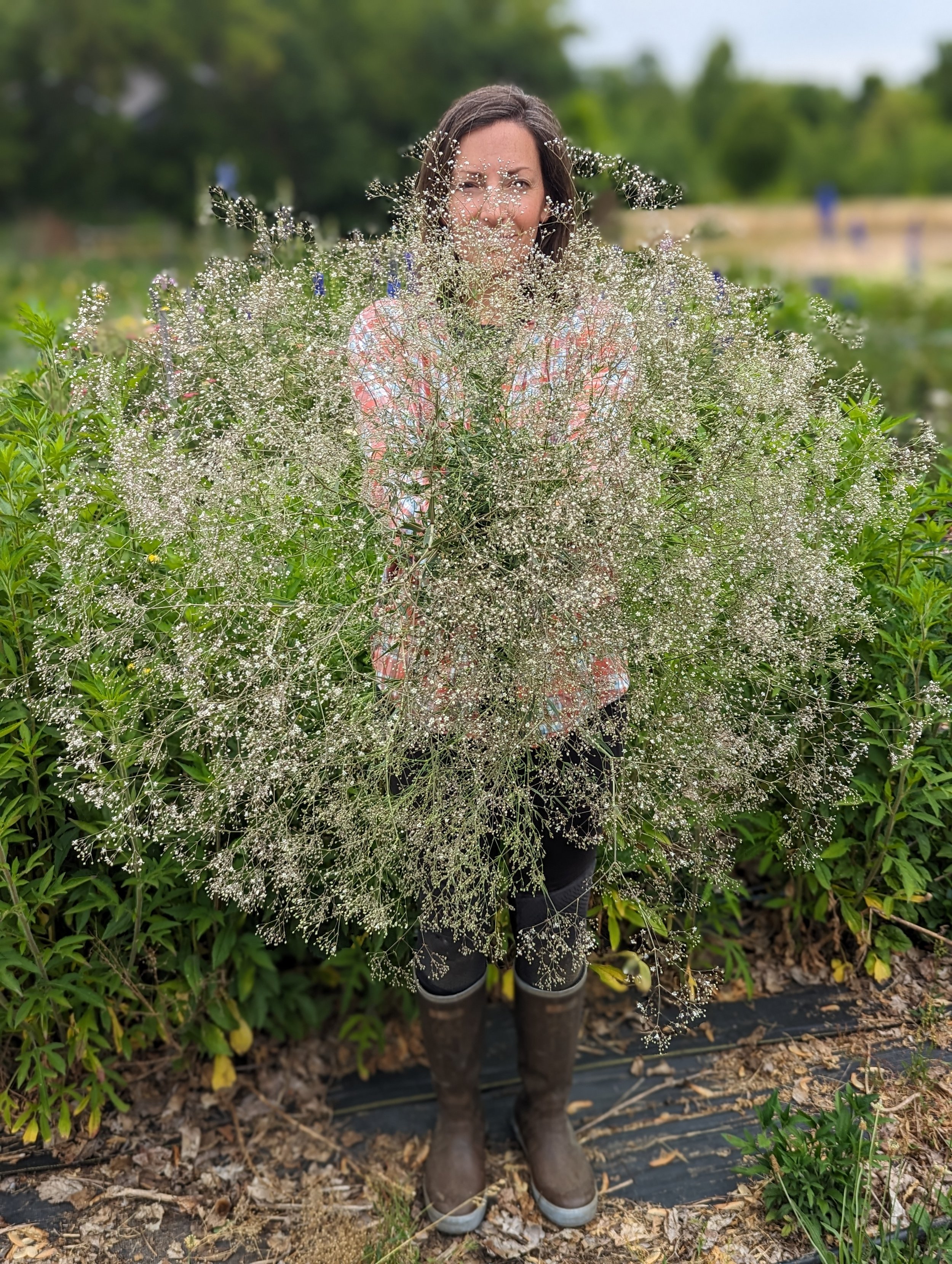






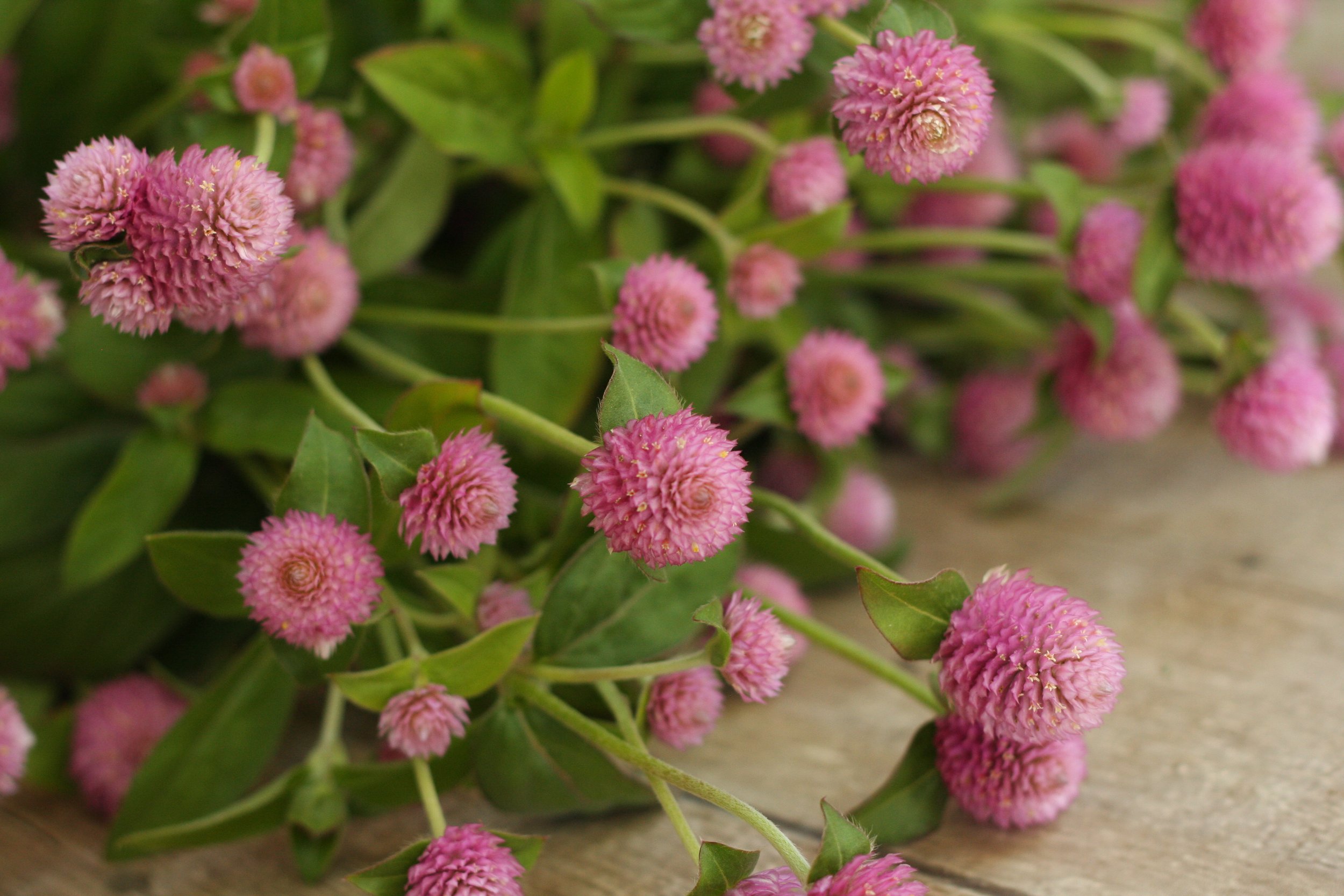




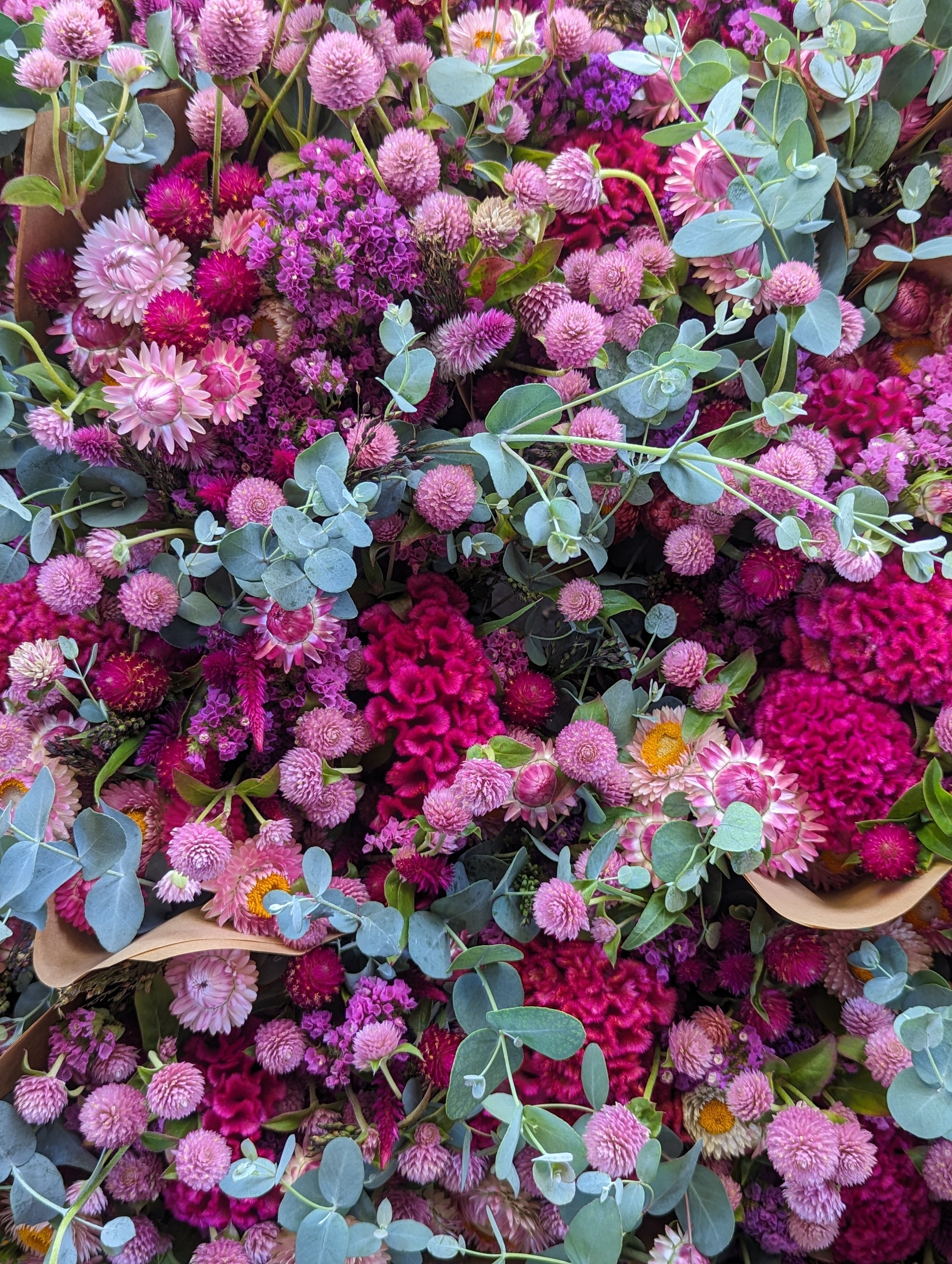



![20180813_112449[1].jpg](https://images.squarespace-cdn.com/content/v1/582b872529687fd6acb7423d/1534278199691-6I9QVX7APYHSJOFZAIGS/20180813_112449%5B1%5D.jpg)
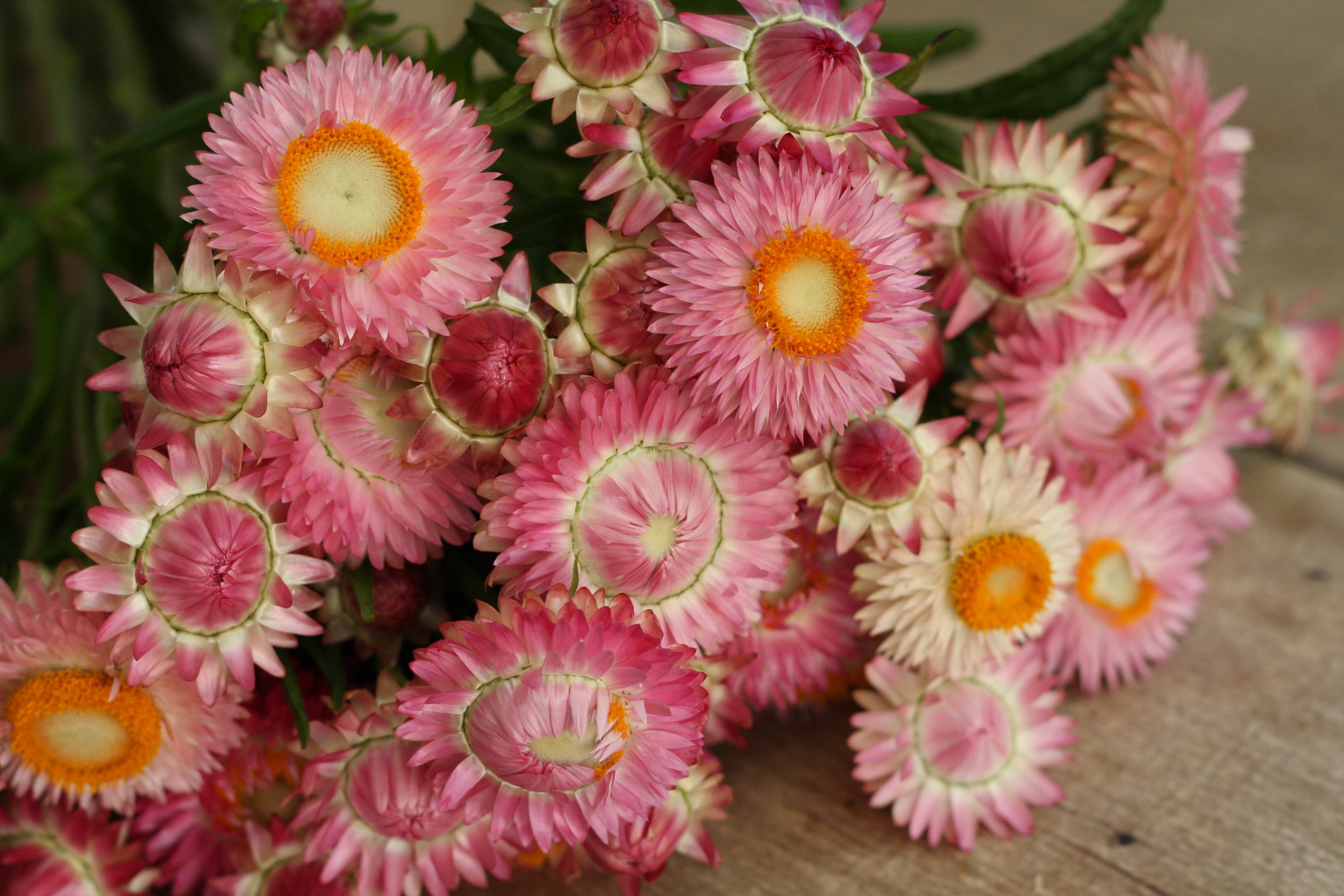
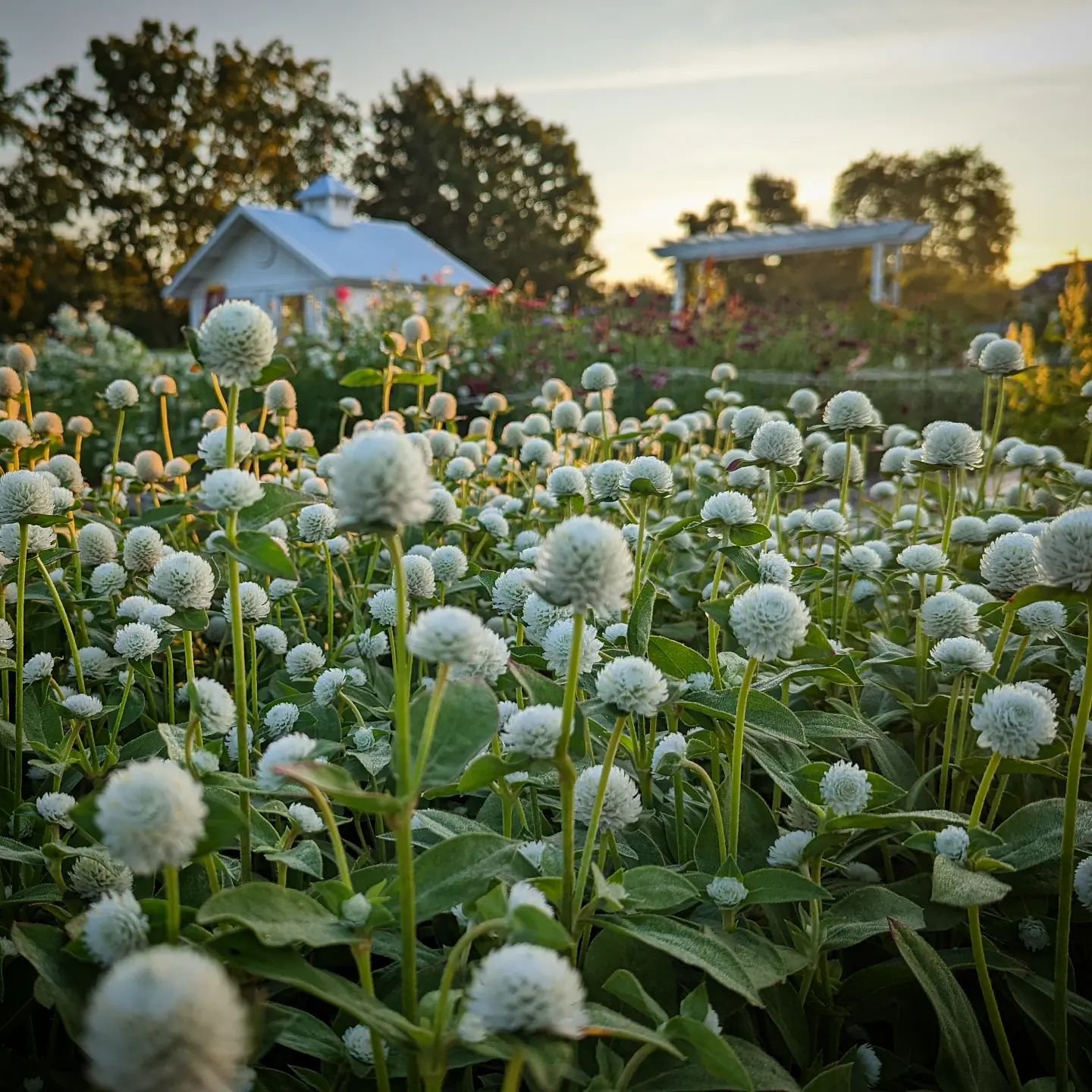

![20170413_083434_HDR[1].jpg](https://images.squarespace-cdn.com/content/v1/582b872529687fd6acb7423d/1492088605762-4U83ZNMFLC5FH5DQUOPU/20170413_083434_HDR%5B1%5D.jpg)







